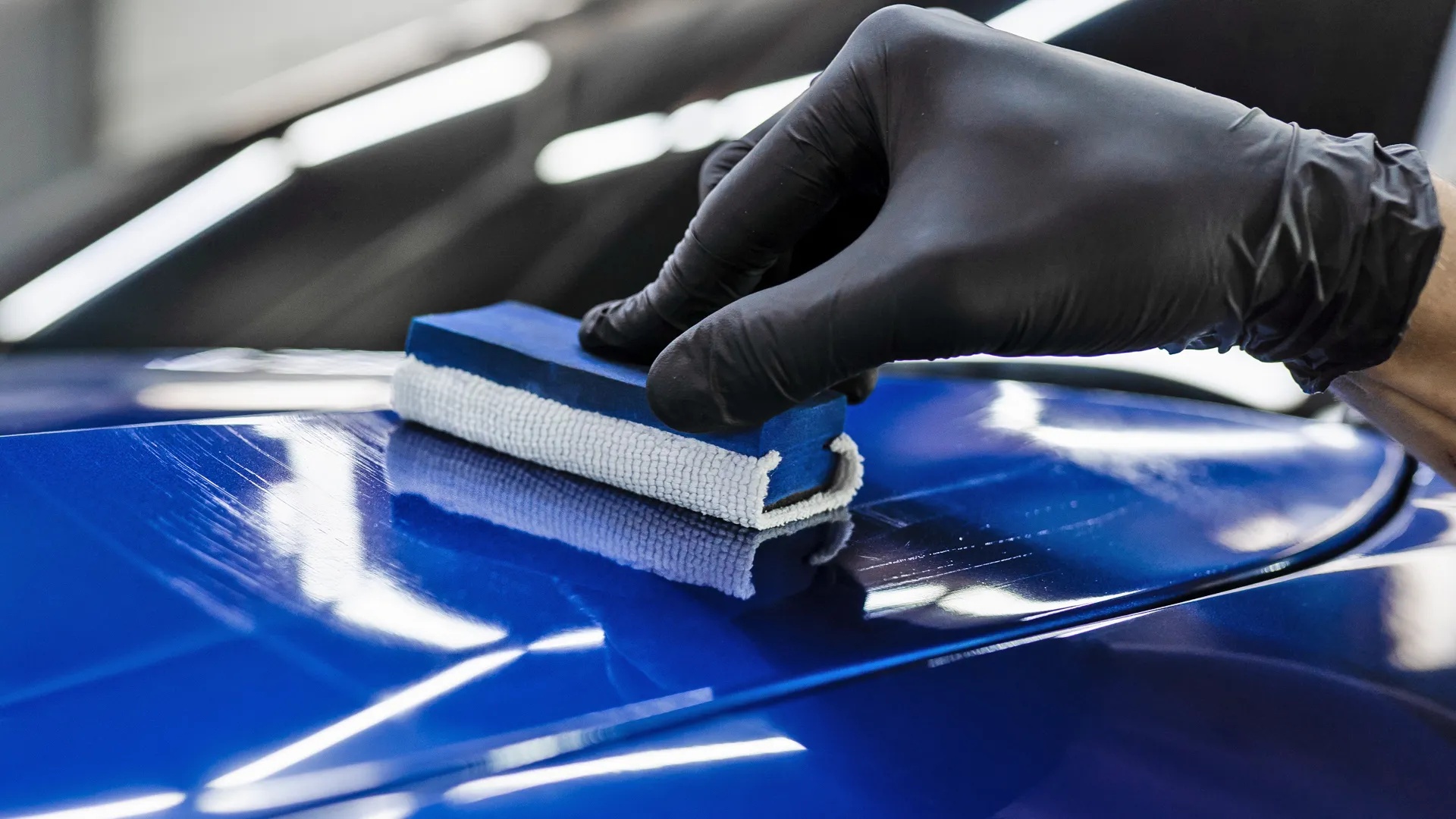Advanced Innovation Behind Ceramic Coating Philadelphia for Ultimate Defense
Advanced Innovation Behind Ceramic Coating Philadelphia for Ultimate Defense
Blog Article
Why Ceramic Coating Is the Ultimate Remedy for a Flawless Complete
Ceramic covering has actually emerged as a leading remedy for those looking for a remarkable coating for their cars, many thanks to its remarkable durability and protective functions. What aspects really established ceramic layer apart?
What Is Ceramic Layer?

When used properly, ceramic layer creates a hydrophobic surface that pushes back water and dust, making it easier to clean and maintain. Unlike standard waxes or sealants, which normally offer short-lived defense, ceramic layers can last for several years, depending upon the item top quality and application method. The procedure of using ceramic finishing calls for precise prep work, including thorough cleansing and sometimes repaint correction, to make certain optimal bonding and performance.
Ceramic coatings are not restricted to automotive surfaces; they can additionally be utilized on numerous materials, consisting of glass, metal, and plastics, providing a versatile option for improving security. On the whole, ceramic finishing represents a substantial advancement in surface area security technology, incorporating both visual and functional advantages for a wide variety of applications.
Advantages of Ceramic Covering
While several surface area protection alternatives exist, the benefits of ceramic covering stand apart due to its distinct homes and lasting efficiency. Among the primary benefits is its phenomenal toughness. Ceramic Coating Philadelphia. Unlike conventional wax or sealants that require regular reapplication, ceramic coatings offer a durable layer that can last for numerous years, substantially minimizing maintenance initiatives
One more notable advantage is enhanced defense versus environmental contaminants. Ceramic layers create a hydrophobic surface that repels water, dirt, and various toxins, making it much easier to clean. This attribute not only protects the car's look yet also decreases the danger of corrosion and oxidation, particularly in severe weather.
Moreover, ceramic finishings supply superior resistance to UV rays, protecting against fading and deterioration of paint in time. This UV defense is vital for maintaining the aesthetic value of lorries and surfaces subjected to route sunlight.
In addition, the shiny finish accomplished with ceramic finish boosts the overall aesthetic charm, offering surface areas a showroom-quality shine. Generally, ceramic finishes represent a substantial advancement in surface defense technology, offering long-lasting advantages that accommodate both useful and visual needs.
Exactly How It Works
Understanding the science behind ceramic layers reveals just how they provide such impressive protection and durability. At its core, a ceramic finish is a fluid polymer that chemically bonds with the automobile's factory paint.
The application process entails several steps, moved here including surface area preparation, which is important to achieving ideal bond. Once applied, the coating goes through a healing procedure, throughout which it hardens and forms a semi-permanent bond with the paint surface. This bond is what distinguishes ceramic finishings from conventional waxes and sealers, supplying a longer-lasting protective obstacle that can withstand for several years.
Moreover, the thickness of the finishing can boost its safety top qualities, making sure that it can withstand extreme problems. Eventually, the scientific research of ceramic finishes integrates advanced products with innovative application strategies to provide an unequaled level of protection and visual improvement for cars.
Comparison With Typical Approaches
When contrasted to traditional paint security techniques such as waxes and sealers,The benefits of ceramic coatings end up being especially noticeable. While waxes use a short-term luster, normally lasting a few weeks to a pair of months, ceramic coverings offer a resilient protective layer that can withstand for great site several years. This sturdiness considerably lowers the regularity of reapplication, making ceramic layers a much more affordable remedy with time.
Furthermore, typical approaches often need comprehensive prep work and several applications to attain a satisfactory degree of protection. In contrast, ceramic coverings bond at a molecular degree with the car's surface area, creating a robust guard versus ecological contaminants like UV rays, acid rainfall, and roadway salts. This bond enhances the automobile's resistance to scrapes and swirl marks, which prevail with conventional waxes and sealants.
Furthermore, the hydrophobic residential properties of ceramic finishings push back water and dust, bring about less complicated cleaning and maintenance. In comparison, wax and sealant-treated surfaces can draw in gunk, necessitating more regular cleaning - Ceramic Coating Philadelphia. In general, ceramic finishings not just give premium defense however also supply a more enduring and visually attractive surface, establishing them as the recommended option for critical vehicle owners
Application and Maintenance Tips

Utilizing a foam applicator, use the finishing in tiny areas, complying with the manufacturer's standards pertaining to density and overlap. Permit enough treating time in between coats, generally 24 hr, to guarantee appropriate bonding. After application, it is critical to avoid exposure to water or rough aspects for at the very least a week to enable the finishing to fully treat.
In addition, utilizing a ceramic maintenance spray can improve the coating's hydrophobic residential properties and long life. Routine examinations for any indicators of wear will assist keep the finishing's integrity and protect that excellent coating.
Final Thought
In verdict, ceramic covering arises as an exceptional option for attaining a remarkable automobile surface. Its extraordinary longevity, protective top qualities, and hydrophobic residential properties substantially improve the car's look while streamlining maintenance initiatives. By forming a durable bond with factory paint, ceramic finish properly guards against scratches, UV rays, and environmental contaminants. With a life-span expanding numerous years, this innovative remedy not just maintains but also elevates the general aesthetic allure of vehicles, making it an affordable financial investment for vehicle lovers.

Report this page